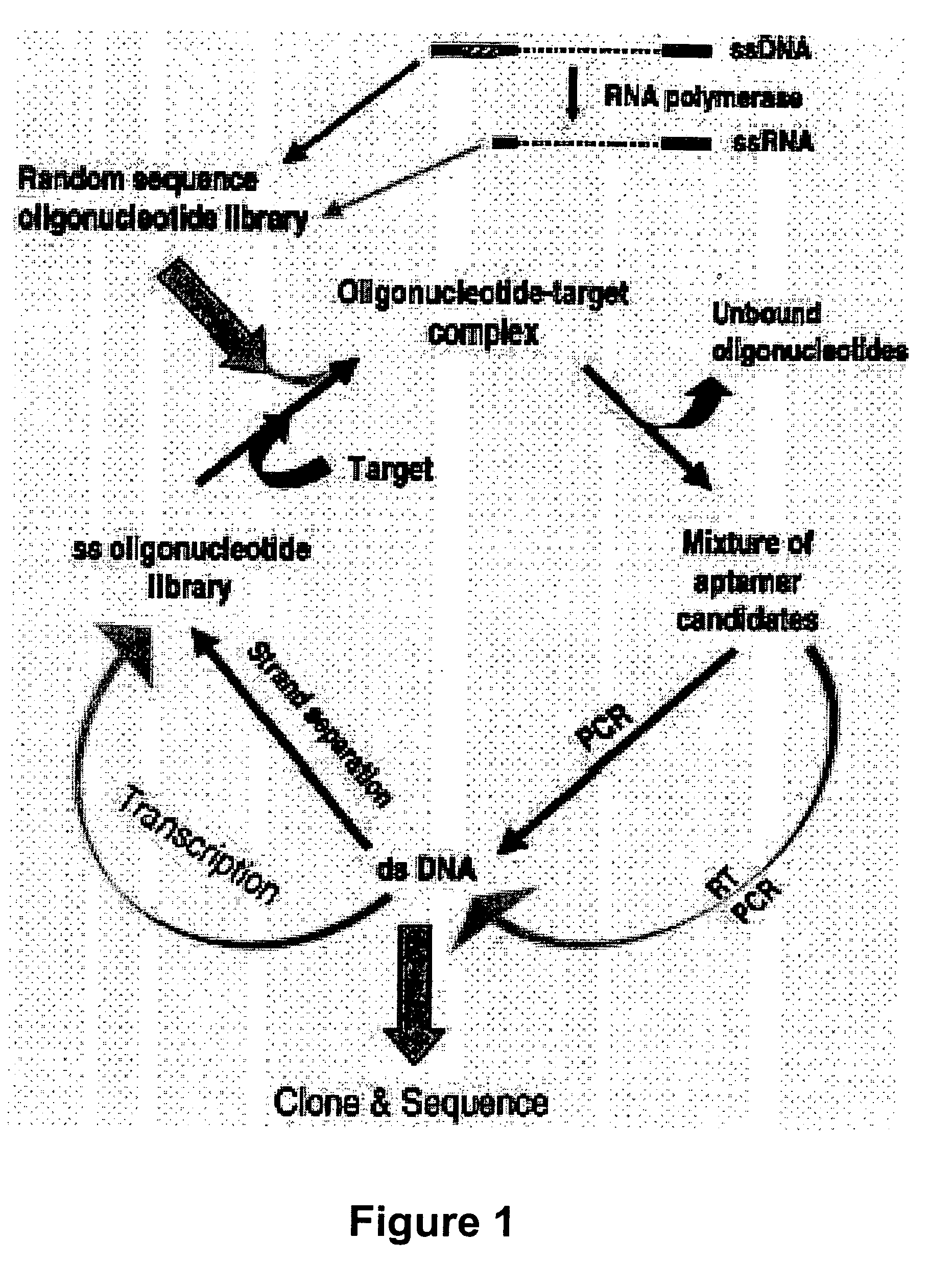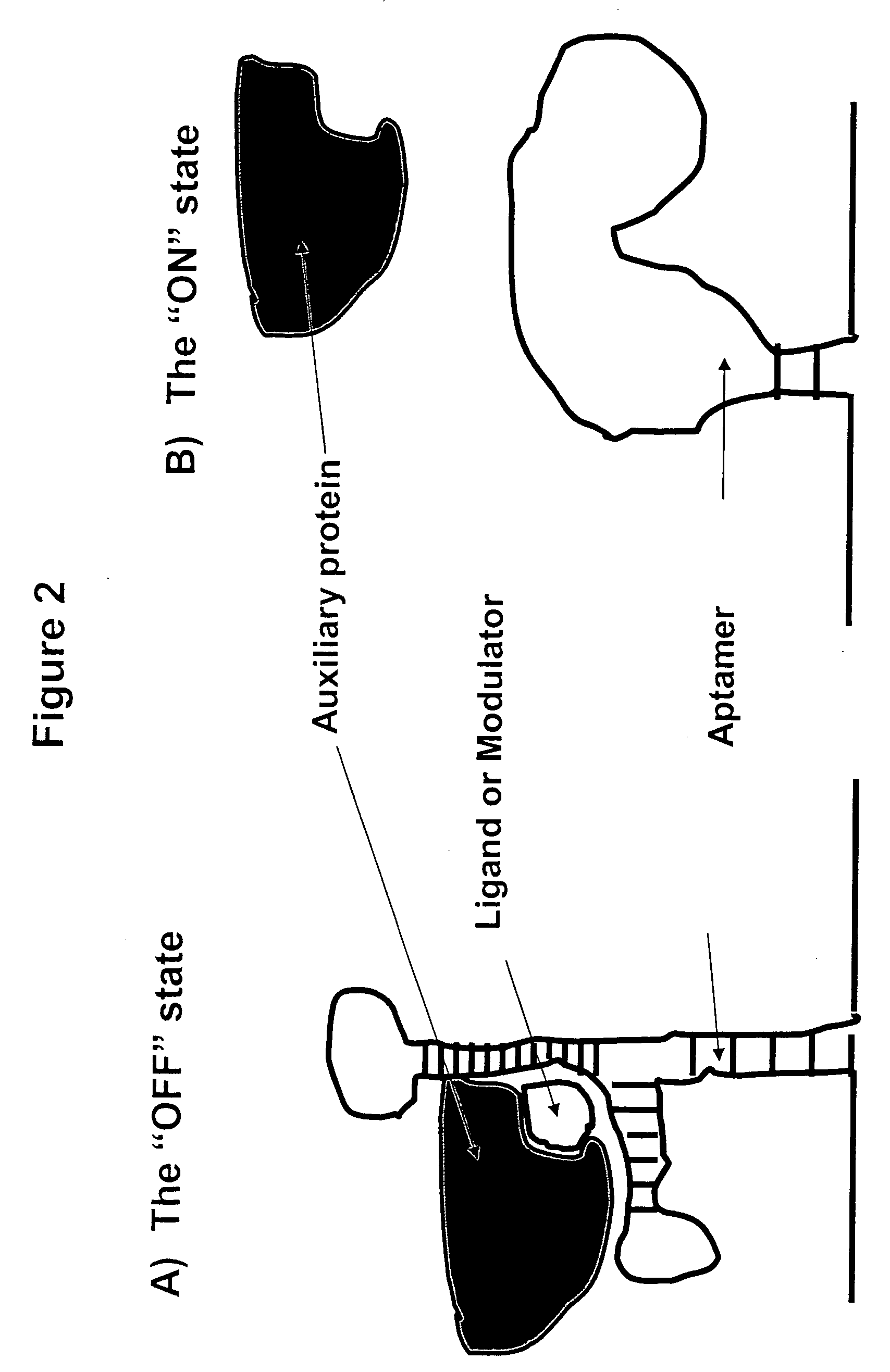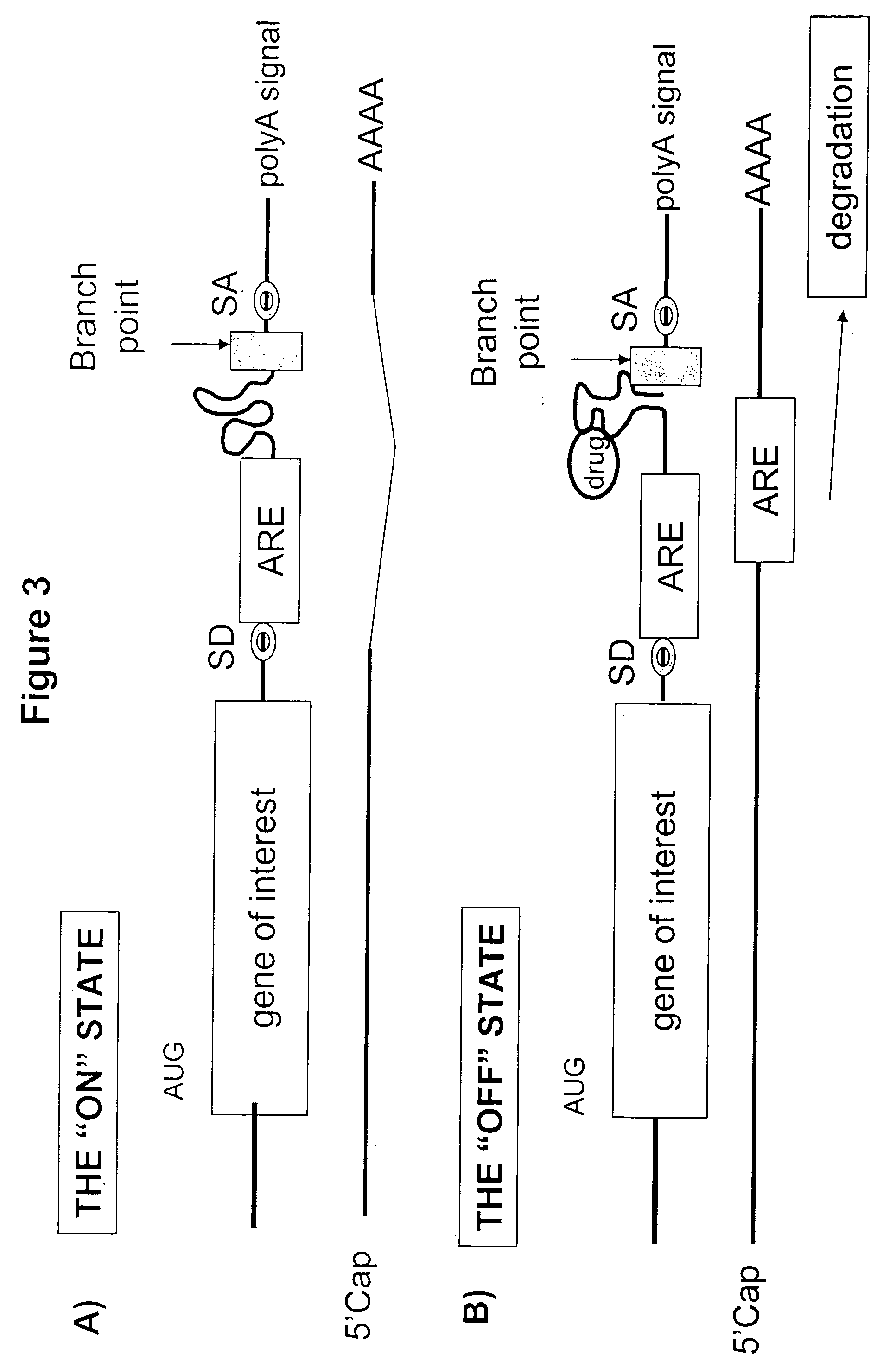Gene regulation with aptamer and modulator complexes for gene therapy
- Summary
- Abstract
- Description
- Claims
- Application Information
AI Technical Summary
Benefits of technology
Problems solved by technology
Method used
Image
Examples
example 1
Regulated Expression of Glial Cell Derived Growth Factor in an EIAV-Based Vector System
[0179] Glial-cell derived growth factor (GDNF) has been shown to have potent effects in preventing death of dopaminergic neurons in the substantia nigra in animal models of Parkinsons disease. This observation has led to the idea of human gene therapy using an expression cassette for GDNF, delivered to cells of the substantia nigra (e.g. U.S. Ser. No. 10 / 008,610). However it is generally agreed that unregulated, constitutive expression of GDNF in a gene therapy application is undesirable due to the potential for inappropriate growth of neurons. In this example we demonstrate a means of controlling expression of GDNF when delivered by an EIAV vector system. The system described here comprises a switch by which GDNF expression is turned off by addition of the drug diflucan also known as Fluconazole, (Kaufman D. et al., N. Engl J Med; 345:1660-1666, 2001; Schutze G. E. et al. N Engl J Med; 330:1759-...
example 2
Treatment of MPTP (1-Methyl-4-Phenyl-1,2,3,6 Tetrahydropyridine)-Ablated Monkeys with a Lentiviral Vector Expressing GDNF Under the Control of Diflucan and Comparison with Unregulated Vector
[0195] These experiments show that if diflucan (fluconazole) is administered continuously (3-12 mg / kg×day) to an animal previously treated with a lentiviral vector carrying the GDNF ORF (Lenti-GDNF) as described in Example 1, that GDNF expression is switched off by the presence of drug, no therapeutic effect is seen in Parkinson's model monkeys, and that no significant levels of GDNF can be measured in the brains of diflucan treated animals compared to animals where diflucan is omitted. Vector is prepared as described in Example 1 and concentrated to a minimum of 109 transforming units / ml in formulation buffer.
[0196] Twenty young adult rhesus are initially trained 3 days per week until asymptotic performance is achieved on a hand-reach task in which the time to pick up food treats out of recess...
example 3
Gene Regulation by Aptazymes—Aptamer-Ribozyme Hybrids
[0206] In the control systems described in Examples 1 and 2 the presumed mechanism of expression control is via interference of translation by impeding the progress of the ribosome as it scans towards the start codon. An alternative way of inhibiting translation is to destabilize the mRNA. In this example we demonstrate a ribozyme which is activated by interaction of an aptamer with its ligand. This new moiety is termed an aptazyme. Activation leads to cleavage of a cognate sequence within the mRNA, for example just upstream of the polyA sequence, leading to downregulation of expression. This system has the advantage over the simple ‘blocking’ aptamers of Example 1 and 2 that cleavage of the RNA is irreversible and may also require a less stable aptamer-ligand interaction in view of the relatively short life-time required for substrate cleavage to occur. In addition, there is the possibility of trans activity leading to enhanced ...
PUM
| Property | Measurement | Unit |
|---|---|---|
| Dissociation constant | aaaaa | aaaaa |
| Dissociation constant | aaaaa | aaaaa |
| Gene expression profile | aaaaa | aaaaa |
Abstract
Description
Claims
Application Information
 Login to View More
Login to View More - R&D
- Intellectual Property
- Life Sciences
- Materials
- Tech Scout
- Unparalleled Data Quality
- Higher Quality Content
- 60% Fewer Hallucinations
Browse by: Latest US Patents, China's latest patents, Technical Efficacy Thesaurus, Application Domain, Technology Topic, Popular Technical Reports.
© 2025 PatSnap. All rights reserved.Legal|Privacy policy|Modern Slavery Act Transparency Statement|Sitemap|About US| Contact US: help@patsnap.com



